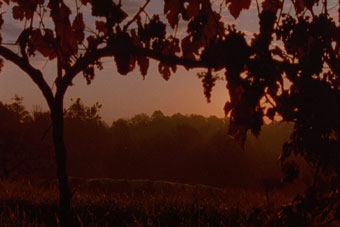Once snubbed as unrefined and immature by the international wine community, American wine, led by the Napa Valley, has achieved worldwide acclaim.
 Despite its newfound prominence, winemaking has a long tradition in America, and has especially deep roots in the rich red clay of Virginia. Both English settlers in Virginia and Spanish missionaries in California brought wine grapes to North America. While the California missionaries were primarily interested in sacramental wine, the vines brought to the Jamestown Colony in Virginia were to serve a dual purpose.
Despite its newfound prominence, winemaking has a long tradition in America, and has especially deep roots in the rich red clay of Virginia. Both English settlers in Virginia and Spanish missionaries in California brought wine grapes to North America. While the California missionaries were primarily interested in sacramental wine, the vines brought to the Jamestown Colony in Virginia were to serve a dual purpose.
At Jamestown, wine was to be produced and consumed by settlers as a substitute for clean drinking water, which was always in short supply. To their astonishment, they found an abundance of native vines growing around the settlement in 1607. Moreover, England saw this “New World” as a potentially fruitful vineyard. While almost continuously warring with France and Spain, two of the world’s primary wine producers, England needed an uninterrupted and inexpensive supply for her wine needs. In 1619, the Jamestown Assembly passed “Acte 12,” which required colonists to cultivate ten vines yearly or suffer severe consequences. Unfortunately, the imported vines died and the native grapes produced only “rath wine.” These early efforts quickly ceased as tobacco emerged as a more viable cash crop for the colonies.
After Jamestown, colonial planters up and down the East Coast dabbled in private wine making. The first commercial winemaking effort in America began in 1773 when an Italian merchant and physician, Phillipo Mazzei, landed in Virginia with a crew of Italian vignerons. He was intent on cultivating Mediterranean delectables such as grapevines, olive trees, citrus trees, and silkworms in the Shenandoah Valley of Virginia.

While traveling with Virginia business entrepreneur Thomas Adams to a site in Augusta County, Mazzei visited Monticello. During an early morning stroll, the ever-charming Jefferson persuaded the Italian to purchase a parcel of land adjacent to Monticello, and sweetened the offer with a gift of 200 acres of his own plantation. As Mazzei recalled the deal many years later, When we returned all the others had risen, and Mr. Adams, seeing Mr. Jefferson said “I see in your face that you have taken him me, and I expected it. ” Jefferson without paying any attention to him, looked at the table and said “Let’s take breakfast; and later we’ll arrange everything.”
Mazzei named his new villa “Colle,” or hill, and began his enterprise. He thought the red soil and temperate climate of Virginia to be superior to that of Italy and the abundance of native vines growing on his property impressed him. Mazzei wrote, “In my opinion, when the country is populated in proportion to its extent, the best wine in the world will be made here.” Jefferson encouraged his Italian friend, and helped him raise money for their endeavor from such notables as George Washington, George Mason, and Virginia Royal Governor Earl Dunmore. Mazzei’s enthusiasm for the American Revolution superseded his interest in producing wine, and he and his men enlisted in the Virginia Militia.
During his brief stint in Albemarle County, his cohorts produced only a few bottles of wine made from native vines and none from European stock, and both Jefferson’s and Mazzei’s abandoned vineyards fell prey to neglect. In a letter to George Wythe in 1787, Jefferson describes his winemaking efforts as “The Parent of misery.” To add insult to injury, warhorses from a Hessian prisoner of war renting Colle trampled out the vineyards completely. It would be another 35 years before Jefferson again planted grapes at Monticello.
